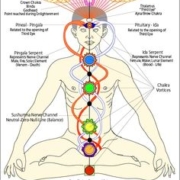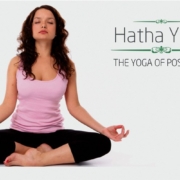Shatkarmas
Traditional Hatha yoga has the shatkarmas (six processes) to cleanse the mind and body from all the diseases and negative issues. This whole concept of cleansing is also called shuddhi kriya (cleansing process) and that’s what we are going to discuss today.
These six processes are able to completely purify our body and mind from all the issues and this is the starting step in a yoga devotee’s life because he/she has to be free from ailments to concentrate on more complex aspects of yoga to realize their goals and aims.
Let me demonstrate this process through example: – can you eat food through mud stick hands?
No, right; same goes for body and mind. Our body and mind can’t do complex yoga without getting rid of impurities in us and that’s why this process is of grave importance.
Now, it’s time for all the six process names and their description:-
1 Neti 2 Dhauti 3 Nauli 4 Basti 5 Trataka 6 Kapalbhati
Neti
Neti or neti pour is nasal wash and is done by pouring water in one nostril and evacuating that water from the other. The main aim of doing neti is to clear air passage present in our head.
There are two ways of doing this- first is ‘jala neti’ meaning the one I have described before and the other one is ‘sutra neti’ in which people use strong and little thick thread inserting one end from one side of nose and pull it in & out from mouth (I know it sound awful but it works).
This is the first step in shatkarmas and should be done first only. This step makes sure that sinuses and throat are not blocked and are in perfect condition.
Dhauti
Dhauti is little bit tricky to explain and can take most of the time so I will write about in detailed summary.
Dhauti is the full cleansing of digestive system but it also shows results on respiratory system as well as eyes and ears. Dhauti is divided into four parts and cleans from teeth to rectum.
It can be said that dhauti is the full cleansing of physical body system; jala dhauti is also called kunjal kriya.
Dhauti can be done in two ways either ‘jala dhauti’ or ‘sutra dhauti’.
Jala dhauti is easier one and can be done alone but sutra dhauti is tricky add needs proper guidance so don’t do it without guidance at any cost.
Jala dhauti- it is the technique in which a person drinks salted water and throw it out after some minutes like vomiting but the difference is that vomit happens in nausea but jala dhauti is done when a person wants to get rid of acidity.
Sutra dhauti- it uses many meters longs and approx 10 cm wide and wet cotton strips which are inserted in stomach to absorb acids.
Nauli
Nauli kriya is quite difficult kriya (work) and is taught rarely today but our yoga teacher training in India still teaches nauli kriya because it is important aspect. Nauli has four steps, a person has to do all of them in order and this kriya is hard which requires patience and practice to master.
First, udiyana bandha is done which abdominal lock done at starting to get the idea of how it is done but it is not the first step.
The first step is madhyana nauli (central nauli) is the process of isolating the contractions of abdominal muscles in other language not moving middle muscles of abdomen, let me warn you that it is very hard but can be done through patience and proper guidance.
Second step is vama nauli (left nnauli) – in this step you have to isolate the left abdominal muscles and their contractions just like the previous one, only difference is of positions- middle and left.
Third step is daksina nauli (right side nauli) and is exactly as the previous one. You may feel discomfort or awkward while doing it but don’t worry-do it in a right way and do it confidently.
Last step is nauli kriya (working nauli) and combines previous three steps, all you have to do is made circular movements in the muscles of abdomen like rotating it
Basti
Basti is performed to cleanse the lower abdomen and colon and can be done in two ways.
Jala basti is the one which is performed today because it is lot easier to do but still an average human can’t perform it without practice so it is not like making cup of tea.
Jala bbasti is done by sucking water through rectum and filling the large intestine and then releasing it from anus. The main purpose of doing basti is to cleanse the lower body more accurately and detoxifying it.
Sushka asti is the second type and is lot harder to do because of use of air but it will e easy after long period doing practices. Sushka basti is exactly same as the jala basti only replacing water with air.
The person who have mastered the nauli can do this with ease but take it easy on yourself, you have to be patient while doing yoga of any kind.
Kapalbhati
kapalbhati is very important and famous pranayama (breath control) and it is also present in shatkarmas.
Kapalbhati can be done in three ways but the most common one is ‘Vatakrama kapalabhati’ which uses air as the way of breathing in which exhalation is active and with voice while the inhalation is passive and without any noise.

Others are Vyutkrama kapalabhati and Sheetkrama kapalabhati, they both consist of practicing kapalbhati through water instead of air.
We have written a post describing kapalbhati to full extent (link here)
Trataka
Trataka is done by looking and concentrating on a small object, dot or candle flame. This kriya is done to bring energy to our third eye (sixth sense). It is believed that by doing trataka, one can power their sixth sense and also gains concentration power with sharpen memory and all the good effects related to brain.
By focusing on a single object present ahead of us has the capability to calm our monkey and restless minds and thus concentrating on it makes our mind better in every possible way. Trataka is the cleansing of the mind and it also brings mind health to sound level.
This were the six processes of shatkarmas and is very important in hatha yoga, that’s why hatha yoga teachers instruct yoga enthusiasts to go through shatkarmas before even doing any single asana (posture). In our yoga teacher training in Goa, Rishikesh, Dharamsala and 200 hour yoga teacher training certification programs at various other places from Mahi Yoga – we make sure to follow what ancient seers have written and follow their ways to teach proper and complete yoga to all of you.















